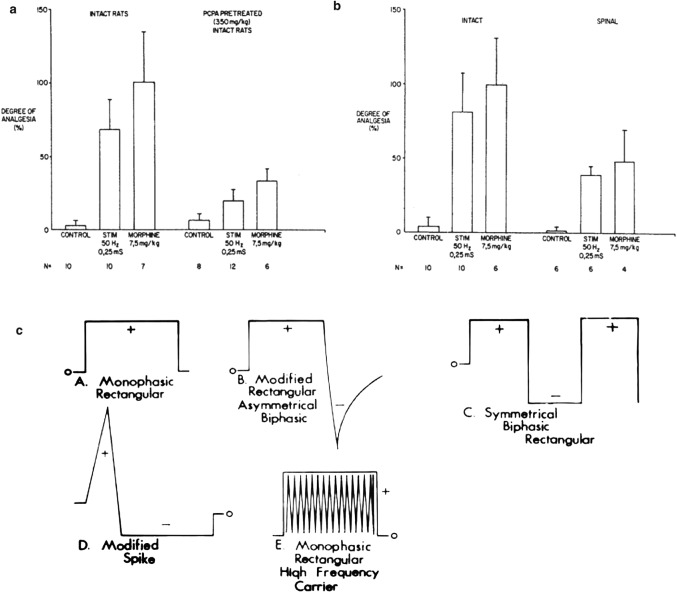Fig. 13.
a Bar graphs represent the analgesia produced by TENS and morphine in the tail flick test for animals that are intact and those that were spinalized. Fifty-hertz electrical stimulation produced an increase in the tail flick latency similar to that of systemic morphine. Spinal transection reduced the amount of inhibition by electrical stimulation or morphine by approximately 50% [82]. b Bar graphs represent the analgesia produced by 50 Hz electrical stimulation or morphine in the tail flick test in intact animals. Animals pretreated with PCPA to deplete the neurotransmitter serotonin (5-HT) showed a significant reduction in the amount of analgesia produced by either electrical stimulation or morphine. Control animals did not receive electrical stimulation or morphine but were still spinalized or pretreated with PCPA [82]. c Depiction of the wave-forms commonly found in most present-day TENS devices [87]

